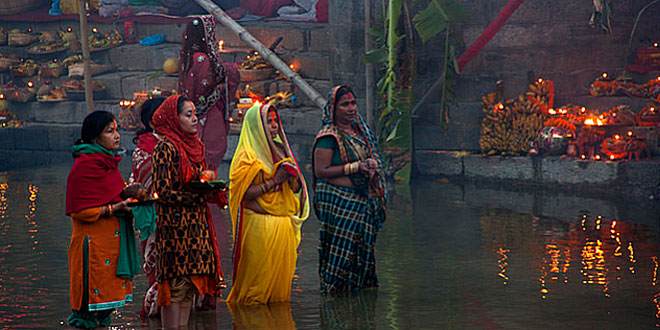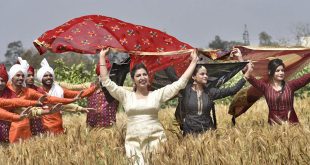Chhath Puja: Worship of Sun God – Chhath puja, the festival of Bihar is not about celebrations but a ritual carried down since time immemorial. Although Chhath Puja unique to Bihar it as been observed in some parts of West Bengal, Orissa, Assam, Mauritius, mainly among the Bhojpuri and Maithili speaking people. Chhath is also important for Nepalese worshipers of the Sun god as well as in eastern Uttar Pradesh. Chhath puja is a way to be grateful to the Sun for giving the bounties of life on earth and for the fulfillment of wishes of believers. Chhath puja is a festival of reverence to the solar deity, the only festival in the world where devotees offer salutations to the setting sun. Unlike Holi or Diwali, Chhath puja is a festival of prayer and appeasement observed with sombreness, a festival that should not be missed. Chhath puja is held in high esteem and regard.
Chhath Puja: Worship of Sun God
Chhath puja is the festival of truth, non-violence, forgiveness and compassion. Chhath puja is a festival celebrated by the Biharis on the sixth day of the lunar month after Diwali every year usually a 4 day long celebration accompanied by rituals or “Surya Sashthi“. The rituals of chhath puja usually consist of fasting, folklore, hymns, together with the somber hues on the banks of the celestial Ganga or any fresh watery body. For example “Chhathi Maiya” is celebrated on the banks of the river Ganga in Patna and on Yamuna in Delhi. A million lit lamps with thousands hands offering ‘Arghya‘ to the sun makes it a delightful sight. The enormous faith in Chhat Puja has made it one of the most popular festivals this region.
Chhath is the only time when the setting sun as opposed to its rising is celebrated for its glory as the cycle of birth starts with death. After sunset, the devotees return home where celebration takes place by singing hymns while devotees maintaining a strict fast without even water for 3 days. Such is the faith in the “Chhath Maiya” as popularly called.
On the morning of the final day of chhath puja, the journey towards the Ganges starts before sunrise and the sun welcomed with folded hands. Offerings include sandalwood, vermilion, rice, fruits, covered usually covered with saffron colored cotton cloth. They offer ‘Arghya’ and chant mantras and hymns from the Rig Veda and commence the puja. The devotees break the fast. Prasad is distributed. According to belief if you beg for the Prasad all wishes will come true.
 Kids Portal For Parents India Kids Network
Kids Portal For Parents India Kids Network







